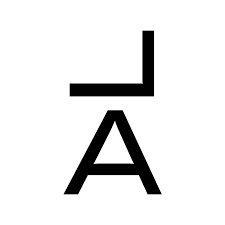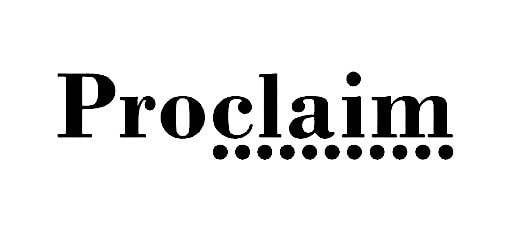exhibitions

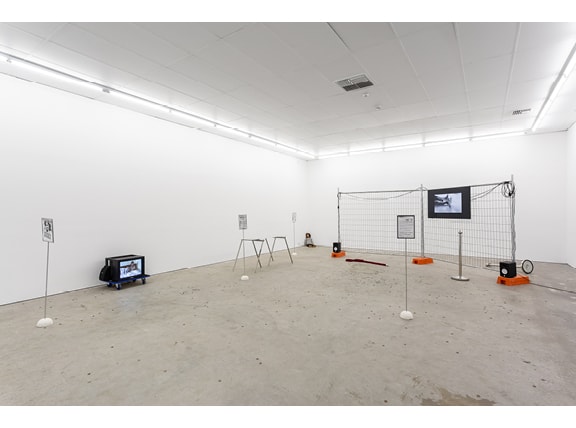
Photo: Christo Crocker
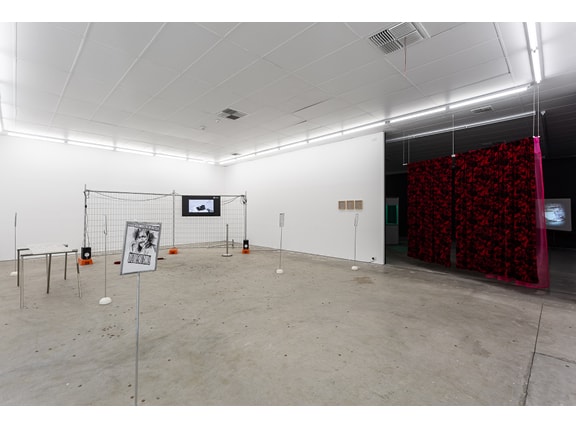
Photo: Christo Crocker
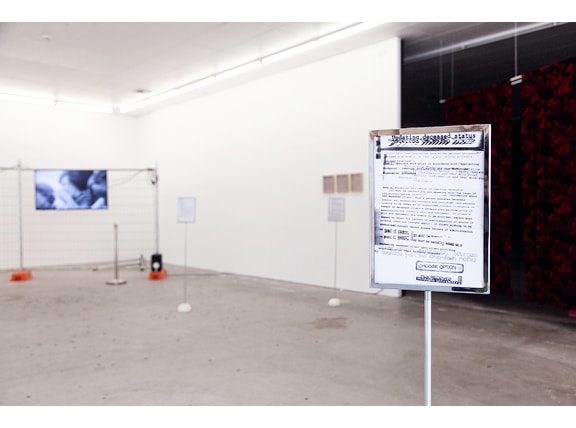
Photo: Jacqui Shelton
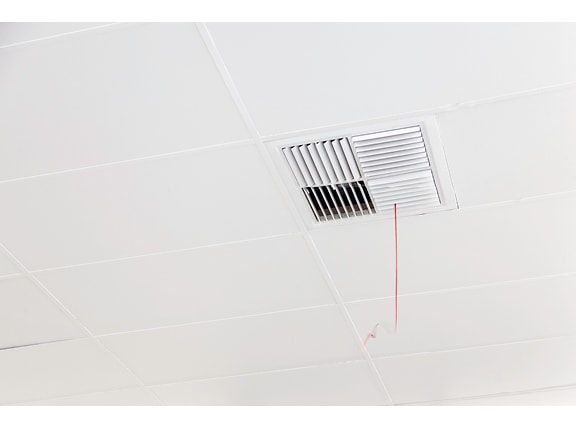
Photo: Jacqui Shelton
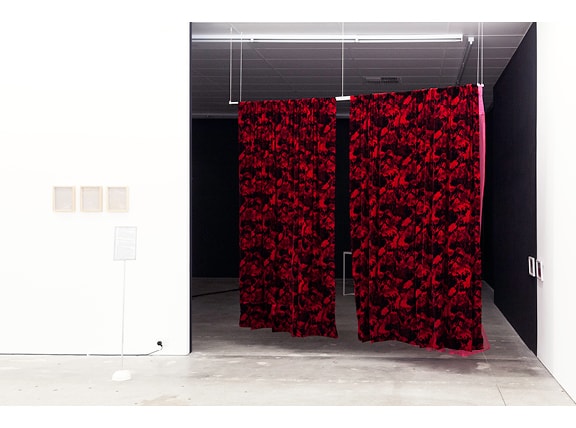
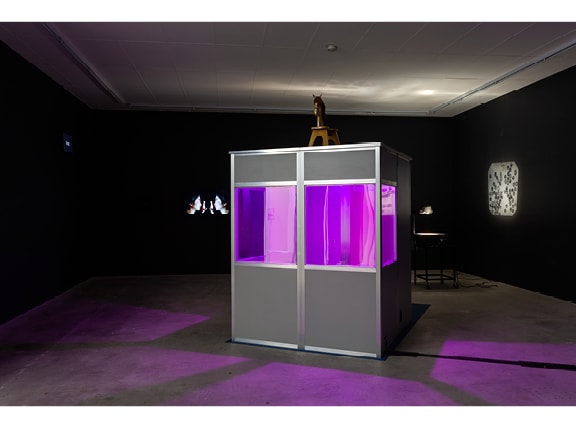
Photo: Christo Crocker
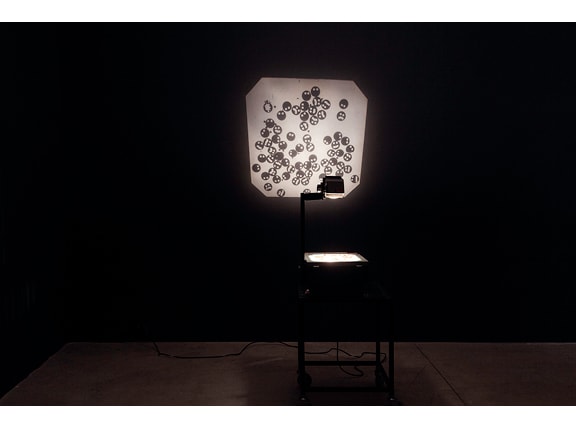
Photo: Jacqui Shelton
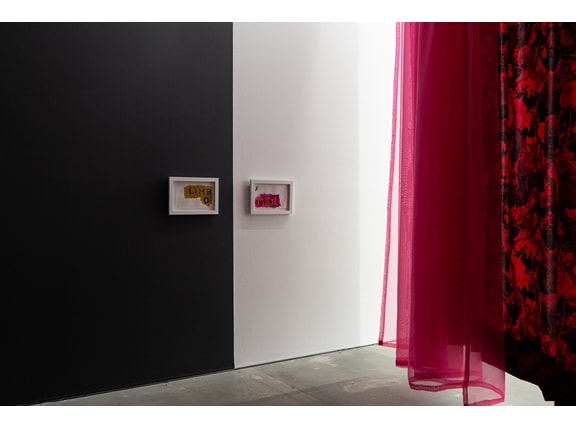
Photo: Christo Crocker
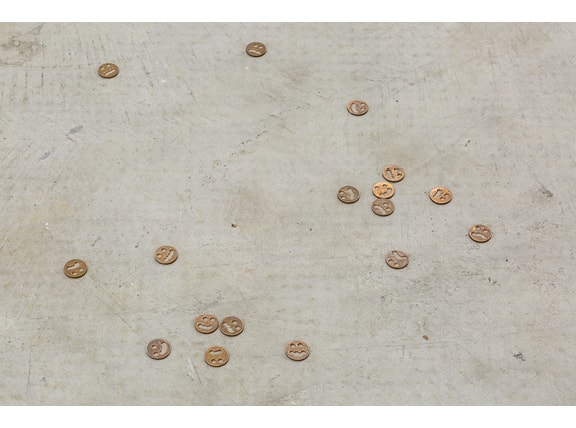
Photo: Christo Crocker
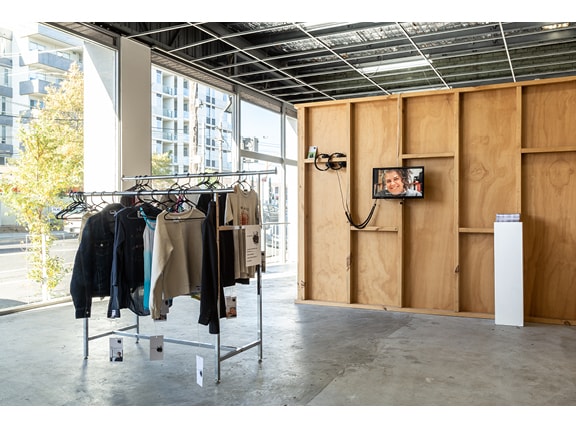
Photo: Christo Crocker
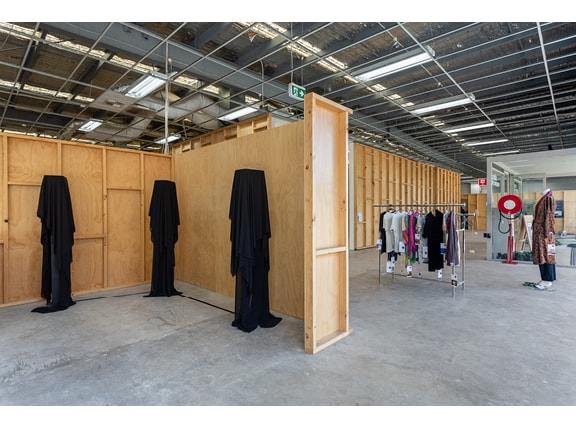
Photo: Christo Crocker
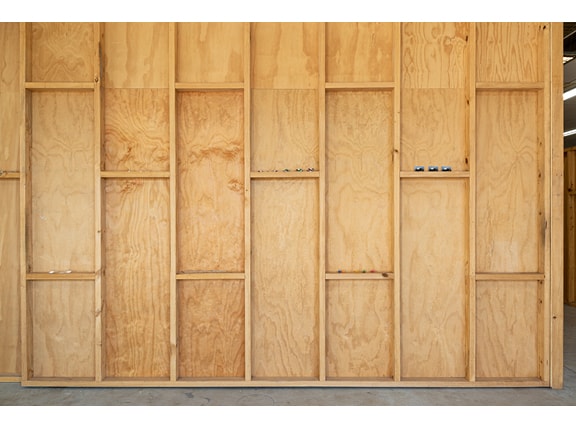
Photo: Christo Crocker
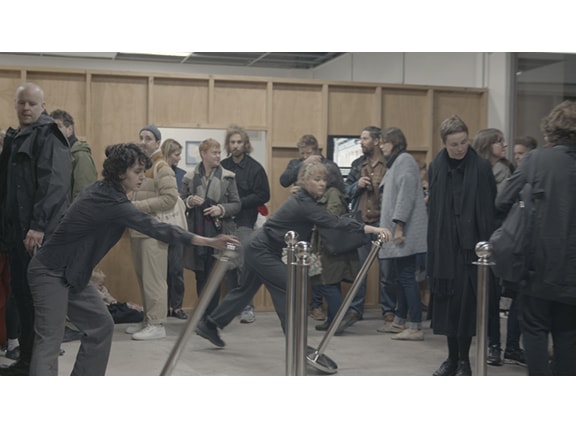
Photo: Charlie Freedman
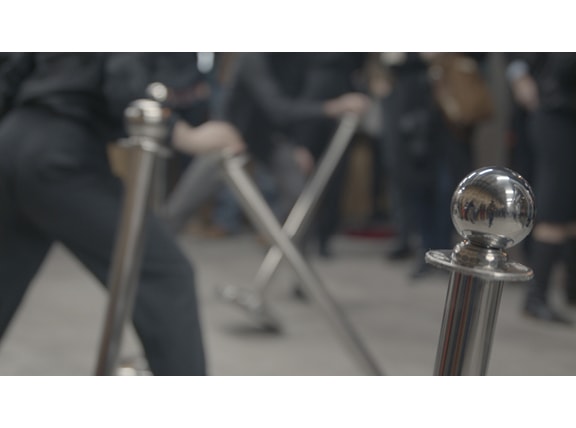
Photo: Charlie Freedman
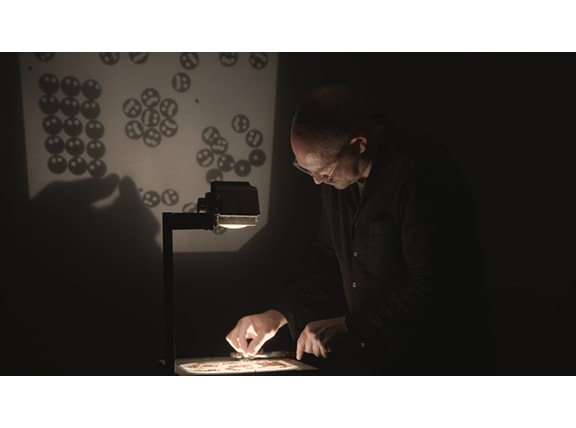
Photo: Charlie Freedman
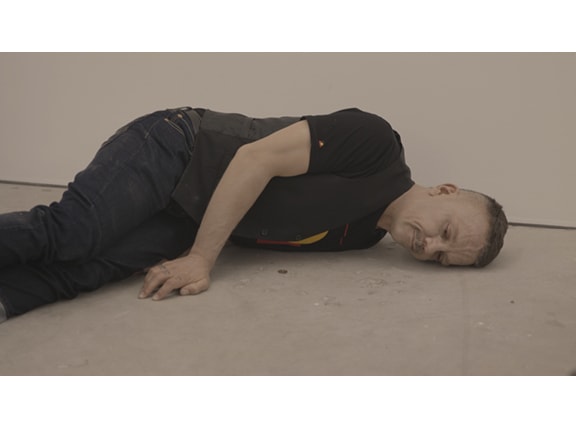
Photo: Charlie Freedman
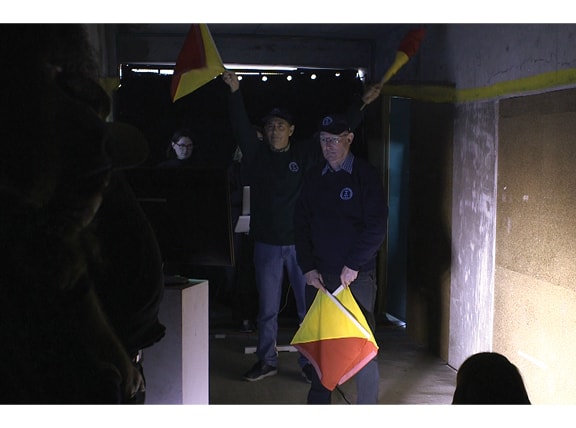
Video still by Lara Gissing
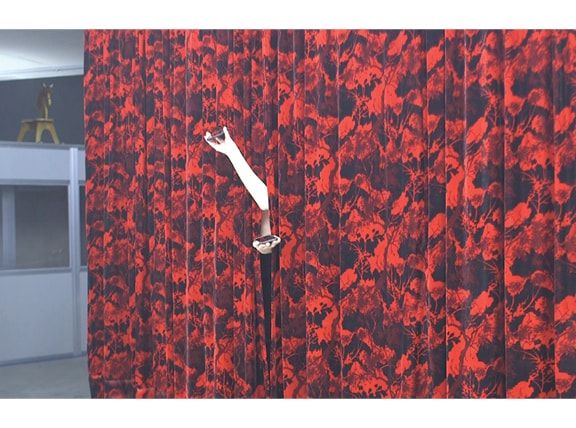
Video still by Lara Gissing
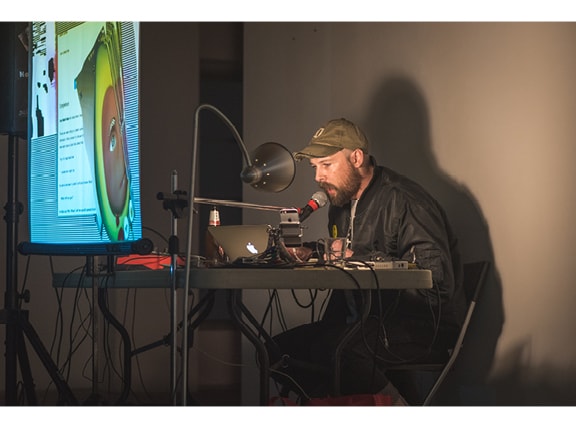
Photo: Keelan O_Hehir
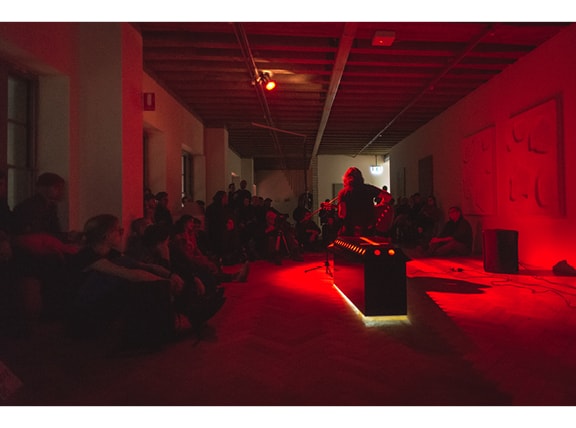
Photo: Keelan O_Hehir
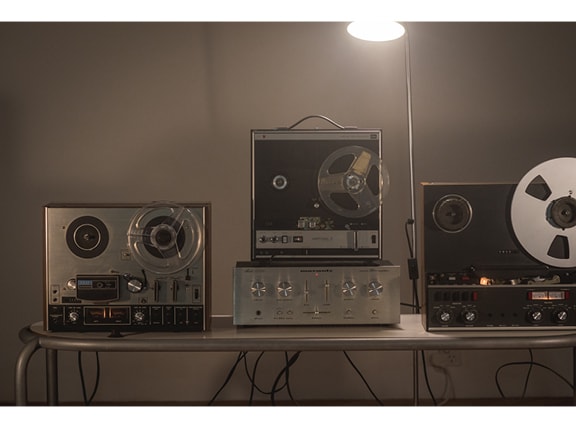
Photo: Keelan O_Hehir
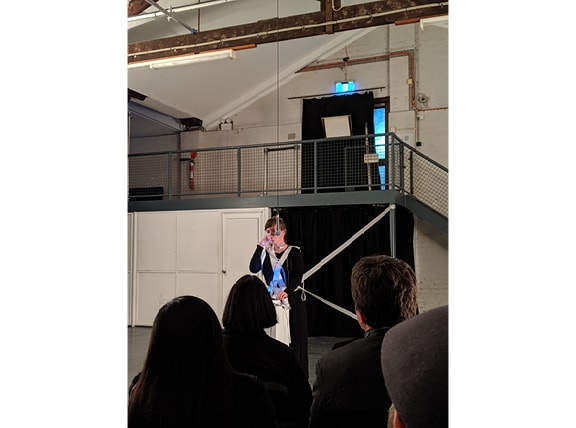
Photo: Siobhan Sloper
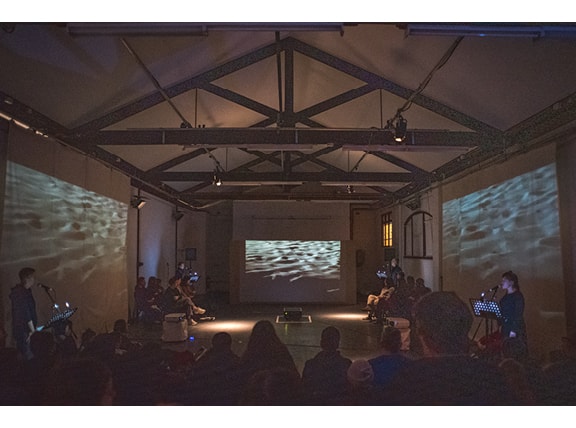
Photo: Keelan O_Hehir
OCTOPUS 19: VENTRILOQUY - CURATED BY JOEL STERN
–
____________
The Puppets of Freedom
Performance Program
Saturday 20 July, 2-4pm at Gertrude Contemporary, Preston South.
This program, The Puppets Freedom drew the project to a close at Gertrude Contemporary and featured new performances by exhibiting artists Jacqui Shelton, Makiko Yamamoto and Ceri Hann.
Of her work 'Crush', Jacqui Shelton writes: Last year, I commissioned Alice Heyward and Megan Payne to produce a movement work for a project related to the viral spread of interior emotions via crowds, Crush. Given the implication of the body in both instances of crushing—to be crushed, to have a crush—I needed a language of physical movement, but was not trained or physically fluent in this myself. We discussed how movement spreads virally between “bodies”, and many forms bodies and movements take, and collaborated on actions directed towards crowd control and disorder. Each instance and context of the performance re-evaluates these relations anew. In this final performance, Megan, Alice and I will rework the score for an audience, rather than a crowd, and explore how proximity and distance operates in the production of bodied relations.
Live presentations by Japanese conceptual artist Makiko Yamamoto are rare and always beguiling listening experiences. Her performance here drew the artist into dialogue with her installed video work, 'Echo as Ego' to produce a new work exploring the ownership of the voice - 'Echoes of the artistic ego in conversation".
Finally, we asked the ever-mercurial Ceri Hann what he'd be doing and he replied that it will be a "de-formance" entitled ‘The nurture of reality’, in which the artist would extract, through demonstrable means, the teething problems of said technology.
____________
This public program, Self by Proxy took place in multiple spaces at the Meat Market Stables and featured new performances created for Ventriloquy by James Rushford and Rachel Yezbick, Kate Brown, Jake Moore, Carolyn Connors, Sage Pbbbt, Jenny Barnes. The works, as a suite, explored the idea of the self as always at the outset delegated, substituted, prosthetic, and other.
Melbourne composer James Rushford and Los Angeles-based moving-image artist Rachel Yezbick premiered a new collaborative performance titled 'And Laid Him On The Green' for multiple projections, live conversation, prerecorded sound, and vocal ensemble. The work was an experiment in misheard, barely-caught, and residual moments occurring at the intersection of technical capture and human interpretation. Vocalists Kate Brown, Carolyn Connors; Sage Pbbbt; and Jenny Barnes performed alongside Rushford and Yezbick.
Sydney artist Kate Brown also presented a solo work exploring the sonic flow between internal (as in inside the body) and external architectures and structures. The performance continued Kate's long running practice of turning (and tuning) the voice inside out, and outside in.
Also presenting on the night was be Melbourne artist Jake Moore who present a new work drawing on appropriated recordings of iconic American vocalist and composer Joan LaBarbara, filtered through two speakers, two chairs and a talkbox.
Self by Proxy took place at the Meat Market, with the performances occupying multiple discrete spaces within the warehouse-style venue.
____________
Lifenessless
Perfromance Program
Monday, 17 June 2019, 6pm-8pm at West Space.
Performances by: Sonia Leber and David Chesworth, Diego Ramirez and Tim Dwyer.
This performance program, Lifenessless, took place at West Space. It explored the way in which voices resonate and remain productive in the space between worlds of the dead and the living, what Jason Stanyek and Benjamin Piekut have called the 'intermundane'.
"In late capitalism, the dead are highly productive. Of course, all capital is dead labor, but the dead also generate capital in collaboration with the living. What is “late” about late capitalism could be the new arrangements of interpenetration between worlds of living and dead, arrangements that might best be termed intermundane"
'Deadness. Technologies of the Intermundane'. Jason Stanyek and Benjamin Piekut
Artist duo Sonia Leber and David Chesworth presented a new audio performance, 'Unseen Light : Prologue (Split open the atom in ourselves)', featuring sound collected from over 90 hours of séance tapes, purchased from a deceased estate, recorded by a New Zealand family in Auckland, and later Australia, between 1958 and 1972.
Diego Ramirez performed a musical ‘audition’ for a Mexican vampire part in the upcoming Buffy The Vampire Slayer reboot, which has been remediated to incorporate greater 'diversity'.
Tim Dwyer presented an audio cut-up piece for the end of civilisation made from samples of debates, murmurs, proclamations, cries and shrieks in the voice of a black hole.
____________
Anachronism Effects
Opening Weekend Performance Program
Saturday 1 June, from 2pm at Gertrude Contemporary.This performance program, Anachronism Effects, explored the way ventriloquy performs a dislocation of body from voice in time and in space. The program borrowed its title from scholar Sarah Kessler's research into 'ventriloquial materiality' and ventriloquism's "enduring anachronism—its at once anticipatory and antiquated appearance." Anachronism Effects, featured new performances created for Ventriloquy by Ash Kilmartin; Mel Deerson and Briony Galligan; Melody Paloma; MP Hopkins.
Ash Kilmartin performed 'You, as a paragraph', a monologue for mediated voice, engaging the ventriloquial tropes of possession, dislocation, and the excessive physicality of (the at times seemingly autonomous and absurd) speaking voice.
Melody Paloma will de- and re-code a suite of Code Poems by Hannah Weiner, master ventriloquist and psychic host to corporeal and non-corporeal bodies alike, in collaboration with retired seafarers Neil Butt and Leigh Webster.
Mel Deerson and Briony Galligan traversed the theater curtain separating heaven from hell.
MP Hopkins read through himself some texts about speaking/voice/language and heard himself doing this reading to himself.
____________
Narcissism and its Echoes: Notes from Steven Connor’s Knee
“The variability of the voice’s origin, whether magically detached from the body, or erupting from illegitimate orifices, means that the ventriloquial voice is both an attempt to imagine and pit the speech of the body against the speech of culture, and an attempt to control that illegitimate speech, to draw it into discourse.” - Steven Connor
What we call ventriloquism is an effect, created in the mind of the spectator. (As Steven Connor says, ‘The art of ventriloquism consists very largely in persuading the audience to do much of the ventriloquist’s work [....] in enfleshing the voice from the skeletal approximations that the ventriloquist supplies”.) Ventriloquy is as much a trick of the mind as it is a trick of the mouth. The sound is issuing from either the wrong time and place, or the wrong voice and body. Or from no body at all. The voice and its shadow, time out of place, a wrong time-place: ventriloquism is about being in-and-out of sync. It is an anachronism, or as Connor (again) says, a dissociation effect, the voice separated from its source, the source either known but not present (‘clear, so to speak, to the ear, but not apparent to the eye’); or purely imagined (hearing voices where there are none). But the difference between these two, ‘the difference between dissimulation and hallucination’, may not always be objective. Speech itself may live as a state of ventriloquy, in ‘there’ talking within us as if we are spoken from elsewhere. Do we, like the doll, offer ourselves as a dummy location for the voice which cannot be located - a vessel for dummification?
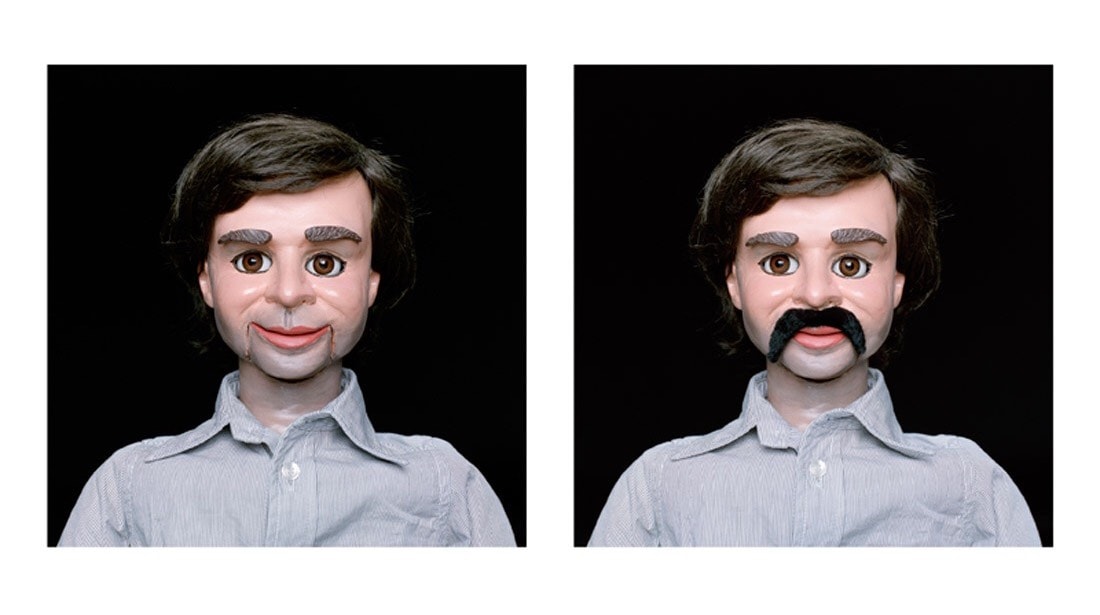
Simon Zoric, Self Portrait / Self Portrait (incognito)
"I think it is in bad taste to quote myself, but here I must make an exception" - Mladen Dolar
Hearing yourself speak, as Derrida first said, is fundamentally unsettling; we perceive this as an echo of our being, a ‘signifier interrupting self-presence’. Your voice is literal, material - a real thing in the world. We can all sing (some actually in tune). You can recognise a cough. Your voice is recognisable, emulable, and now, printable. Your voice is unique; in Australia, my voice identifies me (as the Australian Tax Office makes us repeat when we call them). In Australia, my voice identifies me; that’s why we conflate ‘having a voice’ with political agency. Those denied a voice are stifled, muffled, suppressed, oppressed. Those who get to have a voice are noisy - heard and overheard - powerful; their automatic amplifications part of what Jacques Attali calls ‘the giant noise-emitting machine’.
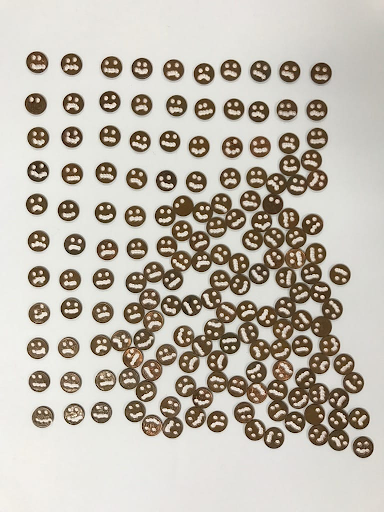
Ceri Hann, Money Talks
There are problems with assuming everyone’s voice is entirely their own. Who hasn’t picked up a saying here or there? We all - intentionally or obediently - parrot the views we feel are correct. It’s an autotune everything world. What you hear are both your own thoughts, and also echoes from within the silo of your own making. Steven Connor says, “the state or the socius enacts its authority through the process of speaking for and through other subjects. Ventriloquism is both the guarantee of this system and a threat to it...” David Goldblatt says, "ventriloquism entails the effacement of the speaker, while he/she pretends simultaneously to listen ... while certain people speak for things (art and nature), persons also speak for other persons, those muted in the social diaspora; the mad, poor, sick, imprisoned.” People speak for things, people speak for persons - and things, perhaps, speak for people. Ventriloquism is an act in which things talk, and those things might be people. (Or not).
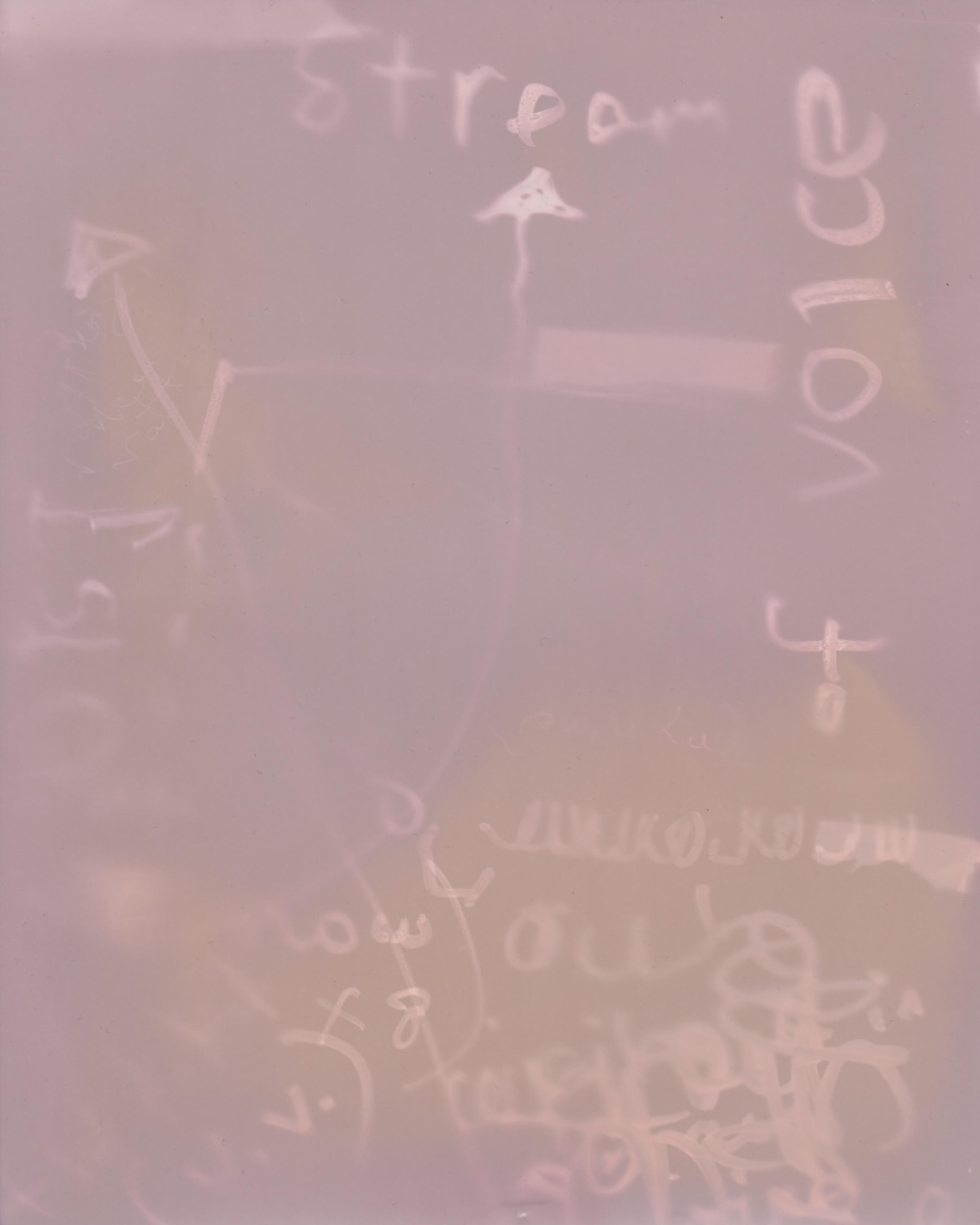
MP Hopkins, Internal Transcriptions #3
mid 17th century: from modern Latin ventriloquium (from Latin venter ‘belly’ + loqui ‘speak’) - Oxford English Dictionary
Ventriloquism used to be a magical practice, aligned with gastromancy - a kind of divination-by-the-stomach. Contemporary gastromantics express their unique subjectivity through productions of distributed, dispensed and disclaimed authorship; performances which, paradoxically, may be read as personal, distinctive, voiced. Perhaps that is where the fantasies of speaking in tongues, the expressivity of the untrammelled id, come in. It is hard to abandon one’s voice completely. But closed mouths and loose tongues can speak other truths too.
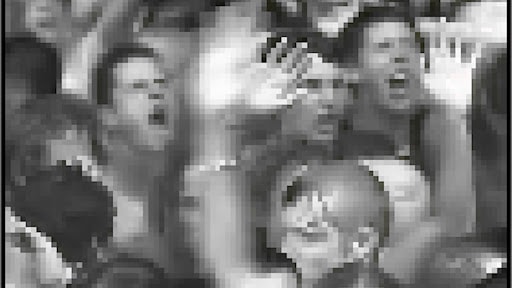
Jacqui Shelton, Crush
“It may be that we are puppets - puppets controlled by the strings of society. But at least we are puppets with perception, with awareness. And perhaps our awareness is the first step to our liberation.” - Stanley Milgram, Cyranoids
“We suggested that he imitate his own voice, he said he could not do that.” - Thomas Bernhard, The Voice Imitator
More Goldblatt: "ventriloquism is illusion without deception - a truly deceived audience would undermine the nature of the act." In other words, it’s an illusion in which the audience is in on the act, a consensual, participatory, self-conscious illusion. The double agency at work here goes beyond modernist reflexivity - ‘I’m IN this experience / I’m HAVING this experience’. Our (self-)awareness of the irreducibly ventriloquial condition of relations is more like ‘This experience is IN me / This experience is HAVING me’. Conversing with oneself via a proxy, the tension is between dialogue and a schizo-monologue. Hello ventriloquist; hello dummy.
Joel Stern and Danni Zuvela, May 2019
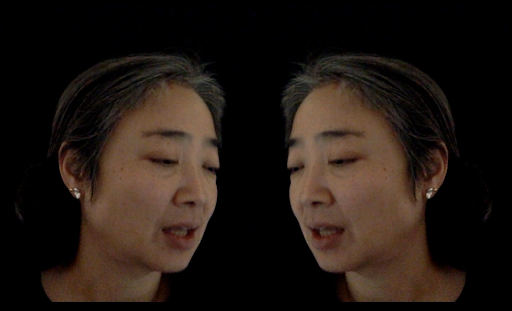
Makiko Yamamoto, Ego as Echo
References
Australian Tax Office, ‘Voice Authentication: Benefits of Enrolling Your Voiceprint’.
David Goldblatt, Art and Ventriloquism.
Jacques Attali, Noise: The Political Economy of Music.
Jacques Derrida, Of Grammatology.
Mladen Dolar, A Voice and Nothing More.
Sarah Kessler, 'Karaoke and Ventriloquism: Echoes and Divergences’.
Stanley Milgram, Cyranoids, cited in Kevin Corti and Alex Gillespie, ‘Revisiting Milgram’s Cyranoid Method: Experimenting With Hybrid Human Agents’.
Steven Connor, Dumbstruck; Panophonia.
Octopus 19: VENTRILOQUY, was curated by Joel Stern. The exhibition was accompanied by a series of public programs presented in partnership with Liquid Architecture at various venues in Melbourne.
Joel Stern is a curator, researcher and artist concerned with theories and practices of sound and listening. With Danni Zuvela, he is Artistic Director of Liquid Architecture, an Australian organisation for artists working with sound. Other initiatives include the artist collective OtherFilm. and Instrument Builders Project, instigated with Kristi Monfries in 2013. In 2018, with James Parker, Stern curated Eavesdropping, an exhibition and research project exploring the politics and ethics of listening. Stern has been curated festivals, events, exhibitions, screenings and concerts in Australia and internationally since the early 2000s. He is a PhD candidate in Curatorial Practice at Monash Art, Design and Architecture, where he teaches Sound (in the Space of Art).
